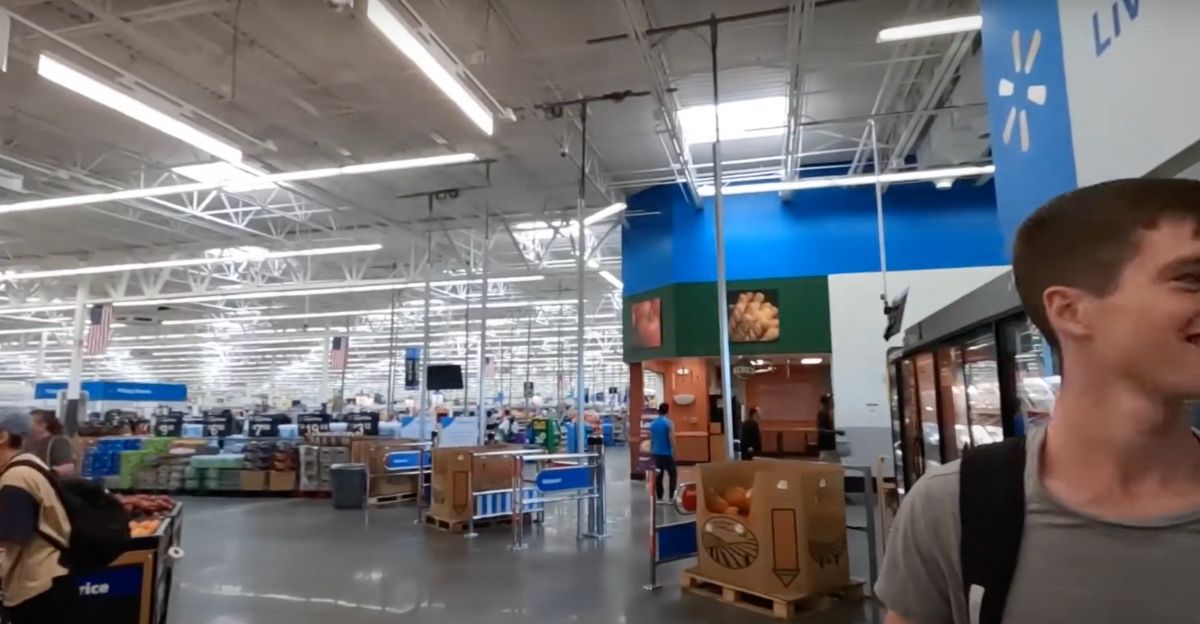
Walmart, the largest private employer in the United States, initiated a wave of corporate layoffs in 2025 as part of a broader restructuring strategy.
The company eliminated approximately 1,500 corporate roles across various departments, citing cost-cutting and operational streamlining, as confirmed by outlets like CBS News, Bloomberg, and CNBC.
These reductions reflect Walmart’s ongoing pivot toward automation and leaner management structures.
The Restructuring Plan

The firings are part of a deliberate restructuring, not a random response to crisis. Walmart has been making these adjustments as part of its long-term plan of becoming more efficient and technology-oriented. The reductions mainly hit corporate headquarters, not store-level operations.
Corporate Jobs Affected

Around 1,500 corporate jobs were cut across Walmart stores in the US. These were data analysts, software engineers, product managers, finance employees, marketing experts, and operations managers. These are indicators of Walmart’s move to consolidate its corporate ranks and decrease organizational tiers.
Automation Investment Drives Changes

According to sources like Chain Store Age, Investopedia, and Symbotic’s official announcements, Walmart has significantly invested in automation technology, and more than $500 million has been allocated to robotics and artificial intelligence systems.
The retail corporation has collaborated with automation companies such as Symbotic to deploy sophisticated warehouse and distribution technologies. The technology increases Walmart’s efficiency with less manual work involved.
Workforce Impact

The redundancies involve workers in several departments such as technology, finance, marketing, and operations.
While any reduction in workforce negatively impacts workers and their families, the tough decisions and strategic cuts are part of Walmart’s long-term plan.
No Evidence of Targeted H-1B Cuts

Some sources accuse Walmart of specifically targeting H-1B visa holders. However, while some H-1B employees were among the reduced staff, there is no solid evidence of visa-based targeting.
Corporate Restructuring Focus

The cuts are more corporate and administrative than customer-facing. Walmart aims to build a leaner organization with less managerial layering and quicker decision-making.
Industry Context

The cuts are part of the broader retail industry trend, by which retailers are adapting to e-commerce expansion, shifting customer behaviors, and technological change. A number of big-box retailers have pursued similar restructuring efforts over the past couple of years.
Cost Management

By minimizing corporate payroll costs, Walmart seeks to enhance operational efficiency and stay competitive in price. The firm still has to deal with ongoing challenges such as inflation, supply chain expenses, and competitiveness that require strategic cost containment.
While Walmart has not disclosed projected cost savings, some online estimates have speculated that eliminating high-paying corporate roles—including some held by H‑1B visa workers—could result in substantial financial savings.
These speculative figures factor in salary levels, visa sponsorship costs, and administrative overhead. However, Walmart has not confirmed any specific cost breakdowns, and there is no verifiable evidence that H‑1B workers were intentionally targeted. Overall, the restructuring appears focused on long-term operational efficiency rather than solely on reducing visa-related expenditures.
Shop Operations Continue

As the corporate reduction continues, Walmart retail operations remain uninterrupted. The firm maintains customer service and store operations, with restructuring limited only to the back office and support staff.
Technology Integration

The layoffs happened while Walmart was in the process of increasing its technology and automation investments.
The company is implementing AI-based systems for its inventory management, supply chain, and customer service improvement.
Support to Employees

The impacted employees are being provided severance packages and can even apply for other roles within Walmart.
Walmart also offers transition support and follows all legal frameworks regarding workforce reduction notices.
Future Strategy

Walmart’s restructuring is focused on making the company leaner and technology-driven. It wants to compete on a larger scale and become more efficient thanks to smoother operations, faster decision-making, and more automation.
Industry Implications

These efforts mirror broader industry trends towards automation and operational effectiveness. As technology advances, organizations in all industries are aligning their workforce strategies to be competitive, keep costs low, and enhance performance.